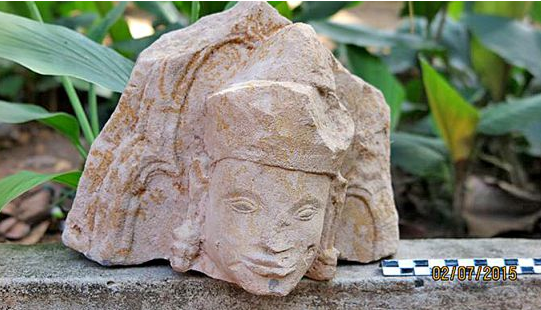
 The Apsara Authority yesterday received two 800-year-old statue fragments uncovered by a ploughing farmer in Siem Reap town’s Kokchak commune, near Angkor Wat.
The Apsara Authority yesterday received two 800-year-old statue fragments uncovered by a ploughing farmer in Siem Reap town’s Kokchak commune, near Angkor Wat.
According to an announcement from Apsara, heritage police and expert officials from the authority examined the statue, concluding that two pieces likely dated from the end of the Bayon era – around the end of 13th century.
One statue, a sitting figure, is about 20 centimetres tall by about 17 centimetres wide, and nine centimetres thick.
The other, a fragment of a statue’s head, had similar dimensions.
“After the expert officials examined and studied them, they concluded that they really are ancient statues, which are in the style of the end of Bayon Era, at the end of the 13th century.
Now the two statues were brought in for cleaning, and then they will be listed for storage and studying their ancient style before they are kept at museum,” the Apsara announcement reads.
Chhum Sam Ban, police chief of Kokchak commune, said that the farmer who discovered the statues reported the find to local authorities, who suggested he leave them alone until experts were able to come and inspect them.
“When they were digging up the land for farming, they found them,” Sam Ban said. “They panicked. They thought that they were some kind of ancient statues. They reported them to us, [and] they were a type of our priceless ancient statues.”
Sam Ban added that officials were thankful that the farmer reported the statues, as opposed to selling them.
An Apsara Authority spokeswoman could not be reached for comment yesterday.
